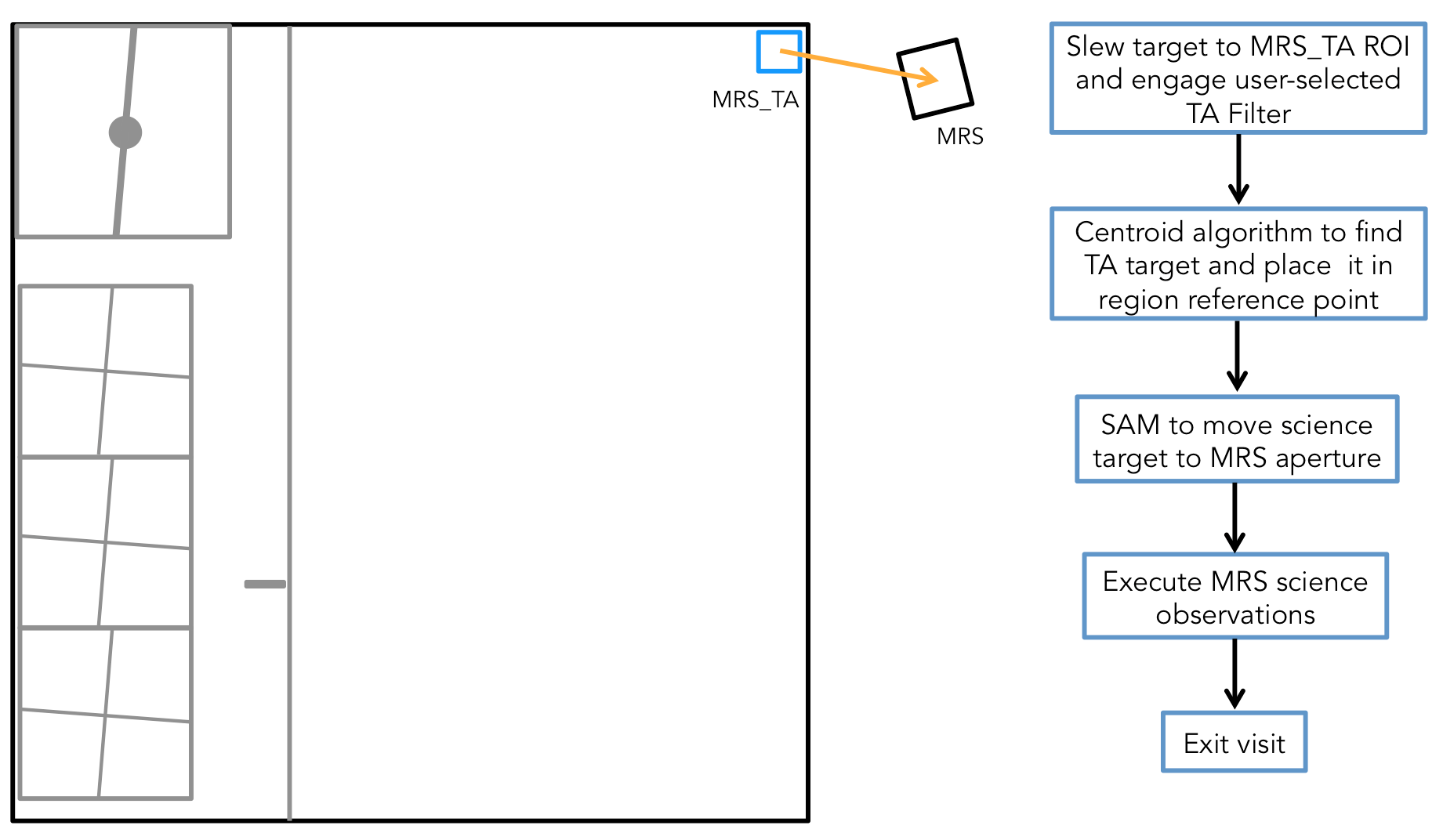MIRI MRS Target Acquisition
The MIRI medium-resolution spectrometer (MRS) may be used with or without target acquisition (TA) for both point and extended sources.
Observers using the MIRI medium-resolution spectrometer (MRS) integral field unit (IFU) may wish to use a target acquisition (TA) procedure to refine the blind JWST pointing accuracy prior to science observations, especially at the shortest wavelengths. This TA improves the pointing precision of the MIRI MRS from ~0.3'' without TA to 90 mas (1-σ radial) with TA, which is approximately the half width of a slice at the shortest wavelength. TA may be performed with the FND, F560W, F1000W, and F1500W filters. Note that the TA centroiding procedure loses accuracy if the pixels are saturated so a brightness limit (Table 1) must also be considered for the target. Without TA, the uncertainty of the pointing is dominated by the guide star catalog position errors and pointing errors due to roll control.
Table 1. Saturation limits for MRS target acquisition for sources of a given blackbody temperature
| Filter | 300 K hard saturation | 1,000 K hard saturation |
|---|---|---|
| FND | 4.7 | 5.5 |
The MRS target acquisition sequence uses a region of interest (ROI) on the MIRI imager located as close to the MRS as possible to minimize offset distances after target acquisition. As illustrated in Figure 1, a 48 × 48 pixels ROI (approximately equal to 5x5'') is defined at the upper right corner of the MIRI imager.
Additionally, some observations with the MRS either do not require or cannot perform target acquisition. Examples of such observations are spectral mapping of extended objects, measurements of faint diffuse targets, or dedicated background observations.
